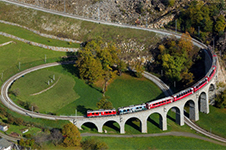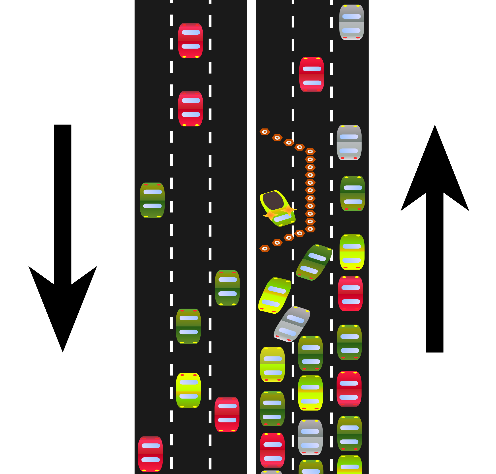InTrans / Mar 30, 2015
Main modes of transportation: DESTINATION SWITZERLAND
Go! Magazine
 posted on March 30, 2015
posted on March 30, 2015
In the last article of this series, “Modes of travel: DESTINATION CHINA,” you learned that China has the most extensive network of roadways than any other country. In this article, you’ll learn about Switzerland’s dense network of public transportation, including scenic railway routes that offer an experience while you travel to your destination.
The Switzerland public transportation system is considered to be one of the best in the world.
Switzerland is located in western/central Europe and separated into 26 cantons or sovereign states. Each of these cantons has its own constitution, legislature, government, and court system. Originally, eight cantons were created in Switzerland as a way to define their sovereignty from the Holy Roman Empire, which they were a part of, after the Swiss defeated Emperor Maximillian in 1499. Today, these 26 cantons offer Swiss citizens democracy by allowing the citizens to vote to amend laws or veto bills.

Railway system
Switzerland is fifth in the world for most dense railways, with Germany in sixth place and the Czech Republic in fourth. Owned by the Swiss Federal Railways System, this nationwide system runs 5,000 passenger trains covering over 170,000 miles per day!
Switzerland is considered one of the most environmentally friendly places because of its high density of public transportation. The trains run on electricity, which results in less noise and air pollution. The electricity is also environmentally friendly due to its sources, which include 56 percent hydropower and 39 percent nuclear power.
Since Switzerland is mountainous, the railway system was created using spiral loop train tracks to ascend and descend steep hills. Another option for trains to pass through steep hills and mountains included the creation of tunnels built into the mountainside.
Switzerland has a large number of scenic train routes, which utilize a specific type of railway called a “narrow gauge railway.” These railways cost less to build because they involve lighter rail construction due to less weight capacity, and therefore carry smaller cars and locomotives. However, narrow gauge railways don’t have much room to expand for faster transport and heavier weights, which could be a concern if traffic congestion increases faster than expected. The cost to riders for a passenger ticket is about $450 for 15 days.
Roads
Switzerland has a dense network of roads, covering over 44,300 miles. Switzerland has a population of eight million people with one-third living in five of the largest cities, including Zurich, Geneva, Basel-City, Bern, and Vaud. Located in central Europe, Switzerland is a common link for people transporting between northern and southern Europe.

In a few of the bigger cities in Switzerland only about half of the residents own a vehicle. Just to give you a comparison, the only city in the United States with only 50 percent car ownership is New York City. Even a city like Washington, D.C., has 63 percent car ownership. Many other US cities have at least 60 percent car ownership.
However, Switzerland had a tourism rate of 8.5 million in 2012. This is higher than the country’s own population, which is approximately eight million. Further, most of the people in Switzerland travel by personal car, even with its dense network of public transportation.
Over the next 20 years, Switzerland will invest $5.6 billion to reduce the amount of bottlenecks in the roadways, which are physical conditions that cause traffic jams. Switzerland’s bottlenecks are due to low-capacity roads in high-capacity traffic areas.
Airlines
The largest airport in Switzerland is the Zürich Kloten Airport. This is the largest international airport in Switzerland and handled 19.2 million passengers in 2006. Given that Switzerland’s total population is eight million, a total of 19.2 million passengers is pretty impressive!
The future of travel in Switzerland
As part of Switzerland’s goal to reduce greenhouse gas emissions, the country plans to reduce emissions by 20 percent by 2020. It is anticipated that Switzerland will focus mostly on public transportation infrastructure, which currently only consists of 20 percent of the country’s travel.
With plans to expand rail infrastructure, this may be able to capture the country’s huge leisure travel population, which makes up 41 percent of all trips made throughout Switzerland.
Related links
http://en.wikipedia.org/wiki/Geography_of_Switzerland
http://travelguide.all-about-switzerland.info/swiss-transportation-systems.html
https://www.schweizmobil.ch/en/summer.html
By Jackie Nester, Go! Staff Writer